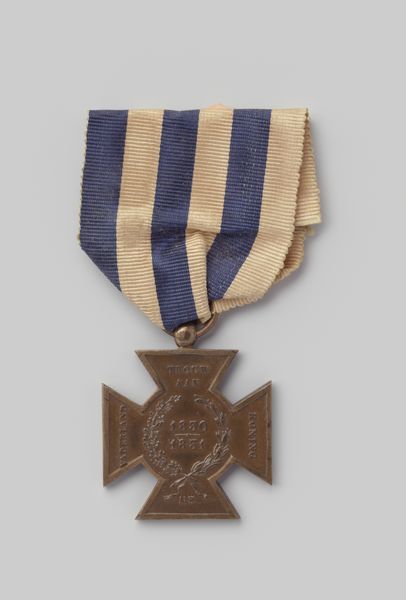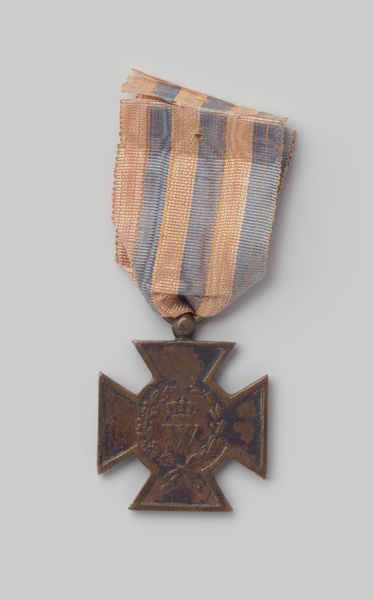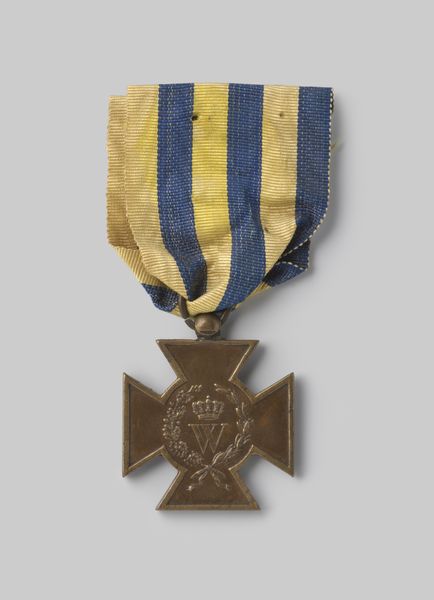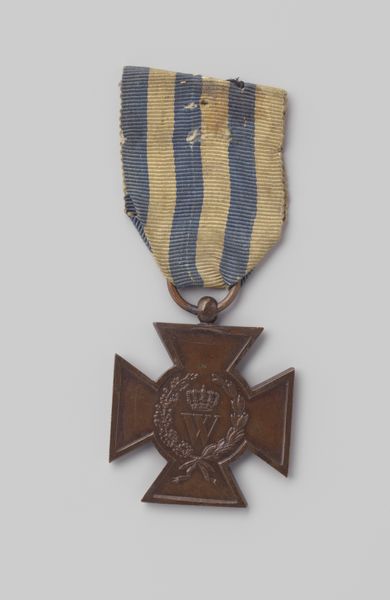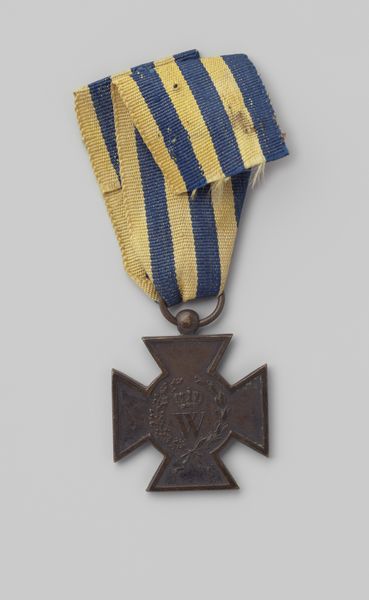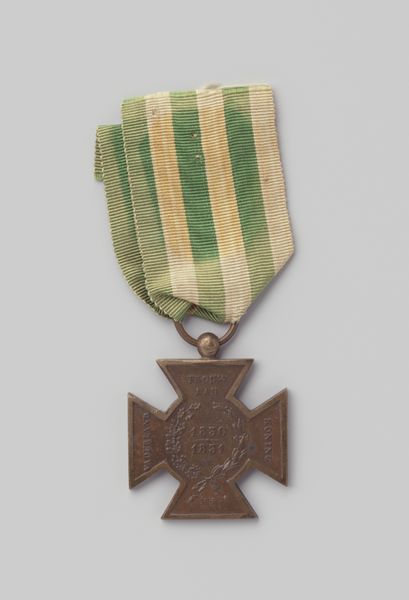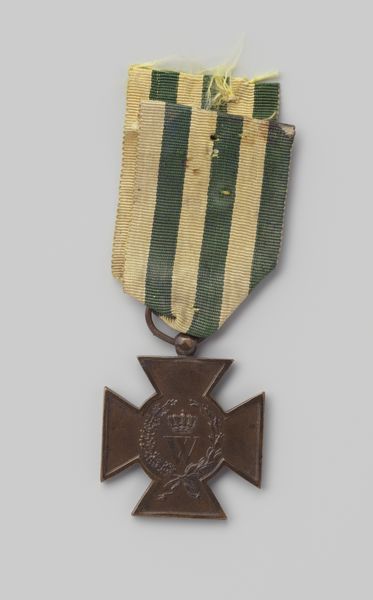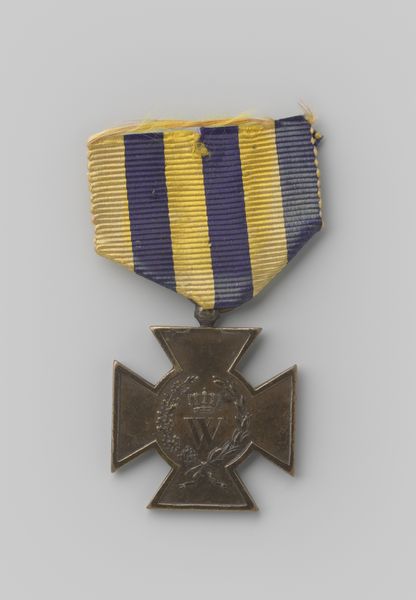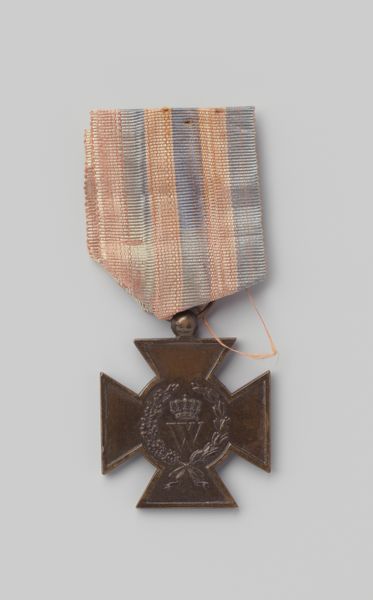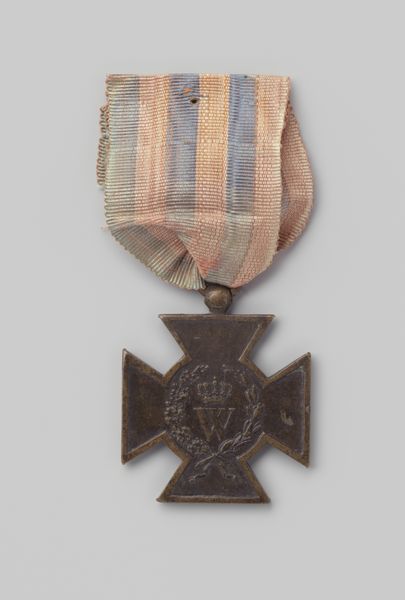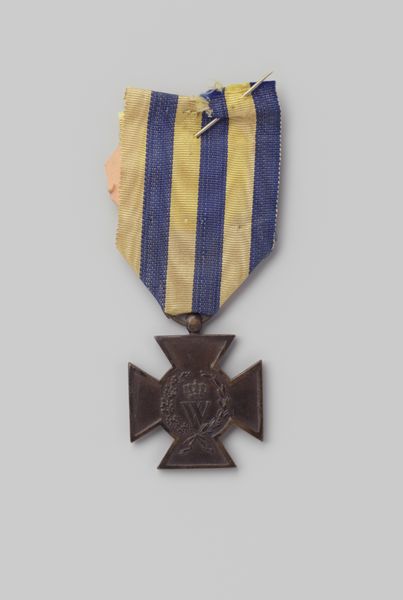
print, metal, relief, textile, sculpture
# print
#
metal
#
relief
#
textile
#
sculpture
#
history-painting
Dimensions: length 7.9 cm, diameter 2.9 cm, width 2.9 cm, length 4.7 cm
Copyright: Rijks Museum: Open Domain
Editor: This is a Metalen Kruis 1830-1831 aan blauw-oranje lint – a metal cross with a blue and orange ribbon, made sometime after 1832 by an unknown artist. The cross itself looks like dark bronze, a heavy piece of history. It's rather austere. How do you interpret its social role, given that it’s a medal? Curator: Well, the Metalen Kruis embodies the complicated politics of imagery. Awarded to those who fought in the Ten Days' Campaign, it signified loyalty to the Dutch crown during the Belgian Revolution. It visually represents the effort to suppress the Belgian independence movement, even though, from our perspective now, that suppression failed. The cross is then not just a piece of metal, it is a visual encoding of Dutch national identity at a crucial moment, and also hints at the exclusion of Belgians from that definition. Editor: So it’s a symbol that’s inherently tied to a specific historical and political context, but its meaning could shift depending on who's viewing it? Like, what does it mean if it’s in a Belgian museum versus a Dutch one? Curator: Precisely! The display of such an object involves a constant negotiation of national narratives. Consider: whose stories are being told? What biases are present in how the conflict is framed? How are museums involved in shaping historical memory? Also, look closely at the details – the crown, the wreath. These visual symbols were deployed to bolster the Dutch monarchy's legitimacy and power. Do you think it worked? Editor: That’s a great point. Seeing it presented neutrally, here, I wouldn’t pick up on the pro-Dutch message immediately, I’d need that context to see the symbolism clearly. That wreath now seems a lot less innocent. Curator: Exactly. Museums have to grapple with this ambiguity when displaying objects like this. The act of exhibiting is never politically neutral. We should remember, then, how institutions and their presentation strategies actively shape how we engage with the past. Editor: I’ll definitely remember that when looking at historical art pieces from now on. Thank you!
Comments
No comments
Be the first to comment and join the conversation on the ultimate creative platform.
